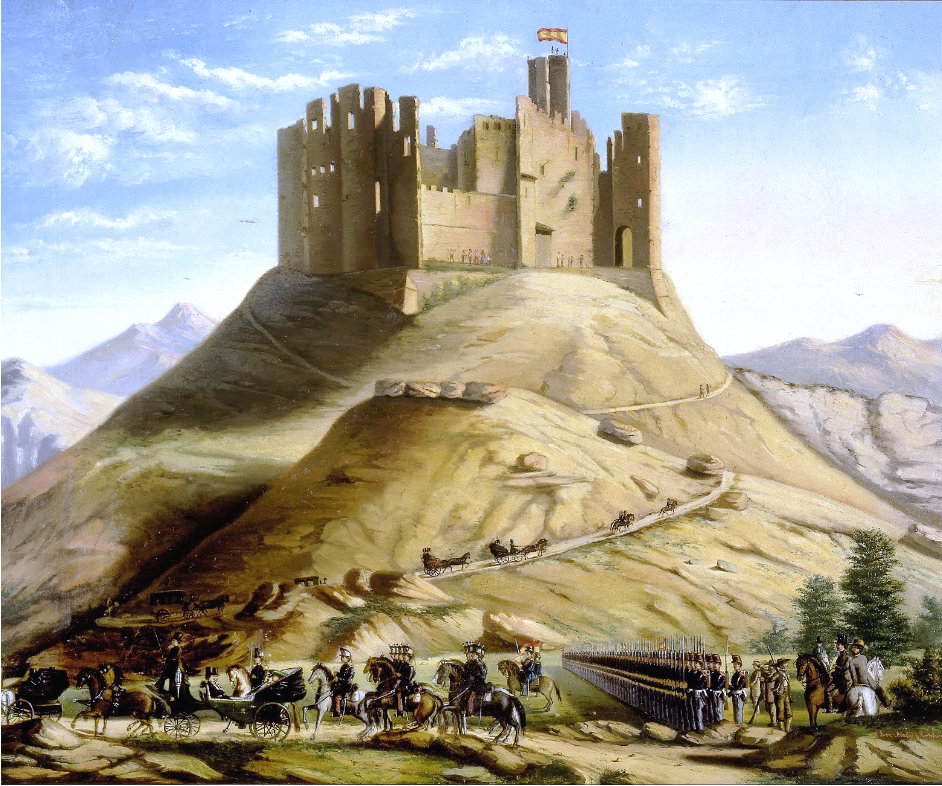Museo de Huesca, Spain


Museum of Archeology and Fine Arts in Huesca, in the North of Aragon (Spain). The museum is located on the University square in the north of the city, near the cathedral and the town hall. The building occupies two former headquarters, the Sertorian University of Huesca and the former Palace of the Kings of Aragon. The original building was built in the 12th century to house the kings of Aragon, built on an Islamic tower with walls in Romanesque style. The building houses the hall where the events of the bell of Huesca took place and also the room of the queen Petronila. Preserves the Baroque style of the Sertoriana University, with an octagonal floor plan with a porticoed courtyard in the center.
The museum of Huesca began to emerge around 1850 thanks to the initiative of the Provincial Commission of Monuments, but thanks to Valentín Carderera, who assumed of his account the creation of the museum, made that it was founded in June of 1873.
The museum is located on the University square in the north of the city, near the cathedral and the town hall. The building occupies two former headquarters, the Sertorian University of Huesca and the former Palace of the Kings of Aragon. The original building was built in the 12th century to house the kings of Aragon, built on an Islamic tower with walls in Romanesque style. The building houses the room where the events of the bell of Huesca took place and also the room of the queen Petronila. Preserves the Baroque style of the Sertoriana University, with an octagonal floor plan with a porticoed courtyard in the center.
The Museum currently has eight permanent exhibition halls, with a linear route, and with the rooms of the Palace of the Kings destined for temporary exhibitions or other public cultural activities. It also has a projection room, a shop, lockers and a rest area.
Its content covers two broad themes that come to coincide with the original denomination that was applied to the museum at the time of its foundation: archeology and fine arts.
Objects of the stone age, the age of bronze and the age of iron are exhibited; Iberian, Roman and ceramic pieces, as well as Islamic fabrics. Also exceptional pieces such as those found in Coscojuela de Fantova, Binéfar or La Puebla de Castro, as well as the patrimony of cave paintings visible in the Huesca territory.
It exhibits painting and sculpture from the twelfth century to the twentieth century. Sixteenth and seventeenth century painting is represented, among other works, by the flamenco triptych La Virgen de la Rosa and four tables by the master of Sigena, leading works of the Aragonese renaissance. Also stands out the Virgin of the Rosary, of Miguel Jiménez. Gothic tables and altarpieces, and works by notable Aragonese painters such as Francisco de Goya, Ramón Bayeu, Felix Lafuente and Ramón Acín.
Objects of the stone age, the age of bronze and the age of iron are exhibited; Iberian, Roman and ceramic pieces, as well as Islamic fabrics. Also exceptional pieces such as those found in Coscojuela de Fantova, Binéfar or La Puebla de Castro, as well as the patrimony of cave paintings visible in the Huesca territory.
Painting and sculpture are exhibited from the 12th century until the 20th century. Paintings from the 16th and 17th century are represented, among other works, by the flamenco triptych La Virgen de la Rosa and four tables by the master of Sigena, leading works of the Aragonese renaissance. Also stands out the Virgin of the Rosary, of Miguel Jiménez. Gothic tables and altarpieces, and works by notable Aragonese painters such as Francisco de Goya, Ramón Bayeu, Felix Lafuente and Ramón Acín.